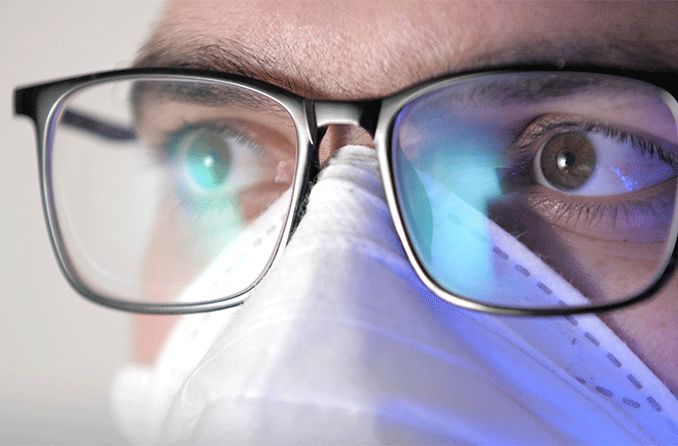Optifog lenses: History, how they work and where to buy

With face masks expected to remain a regular accessory for the foreseeable future, many glasses wearers are dreading prolonged lens fog. Luckily, Optifog lenses by Essilor make foggy lenses a thing of the past. The anti-reflective lenses with anti-fog treatment can help keep your vision clear and fog-free.
History of Optifog
Optifog lenses were first created by Essilor in 2011. The original design required users to apply a special liquid to the lenses weekly to maintain the anti-fog technology. This technology earned Optifog the 2011 Silmo D’Or award in Paris.
In 2014, Essilor announced the second generation of Optifog. The new and improved lenses no longer require a weekly application of liquid. Instead, users would get an Optifog activator cloth that would clean the lenses as well as activate the anti-fog technology. This update made the lenses much easier to maintain while still meeting the needs of glasses wearers.
After the sudden surge in face mask usage in 2020 (due to the coronavirus pandemic), foggy glasses became a wide-spread problem. This inspired Essilor to relaunch Optifog lenses as a solution to mask-related lens fog.
How Optifog lenses work
The science behind lens fog has to do with warmth and humidity exposure. When lenses move from a cool environment to a warm environment, the warm air creates condensation on the cold surface of the lens. You may have noticed this when stepping out of an air-conditioned car or building and into the hot, humid outdoors.
This same science applies to wearing a face mask. This forces the warmth and humidity of your breath upward, toward your lenses. When condensation, made up of tiny water droplets, hits the lenses in a non-uniform way, the droplets settle onto the lenses, resulting in fog or mist.
Optifog lenses have layers of hydrophilic (water-repellant) properties on the front and back of the lenses that repel fog. The activator cloth triggers special molecules that help water droplets spread across the lenses evenly, resulting in an invisible, fog-free layer.
For best results, use the Optifog activator cloth on the lenses daily. The cloth works to clean the lenses, as well as activate the fog-repellent molecules.
Can you combine Optifog with other specialty lenses?
Yes, Optifog technology can be applied to other specialty lenses, working together to eliminate the hassle of foggy lenses both at work and at home. Other lenses include:
Varilux – State-of-the-art progressive lenses for multifocal correction. Pairing Varilux lenses with Optifog will provide clear, fogless vision at all distances.
Eyezen – Lenses with blue light filtering to provide more comfortable viewing of digital screens. Combine Optifog and Eyezen for fog-free screen viewing.
Crizal – Glare-, smudge- and scratch-resistant lenses with added UV protection. Pair Crizal with Optifog for ultimate lens clarity.
TD2 – A scratch-resistant hard coating on both sides of the lens that provide tough, durable protection. Combine with Optifog for sturdy, fog-free lenses.
Most single-vision prescription lenses are also eligible for Optifog, but the technology can only be applied to new lenses. In other words, you can’t add Optifog to your current glasses.
SEE RELATED: 4 common lens coatings for glasses
Where to find Optifog lenses
There is a large network of eye doctors’ offices that will put Optifog lenses in a pair of new frames. When you’re ready to upgrade to a life without foggy lenses, use this search tool to find an eye care practice that sells Optifog.
The search tool lets you customize your search by zip code, and it filters things such as your insurance carrier and preferred office hours. This makes it easy to find an Optifog retailer that fits all your needs.
READ MORE: Transitions - All About Vision
170 years’ history - Essilor Group. Essilor. Accessed September 2021.
Essilor launches new generation of Optifog lenses. Essilor. August 2017.
Essilor relaunches Optifog lenses. Optometry Today. June 2020.
Optifog. Points de Vue. May 2012.
TD2 named for hard coating brand. Vision Monday. December 2018.
Page published on Tuesday, October 12, 2021
Medically reviewed on Wednesday, September 29, 2021






